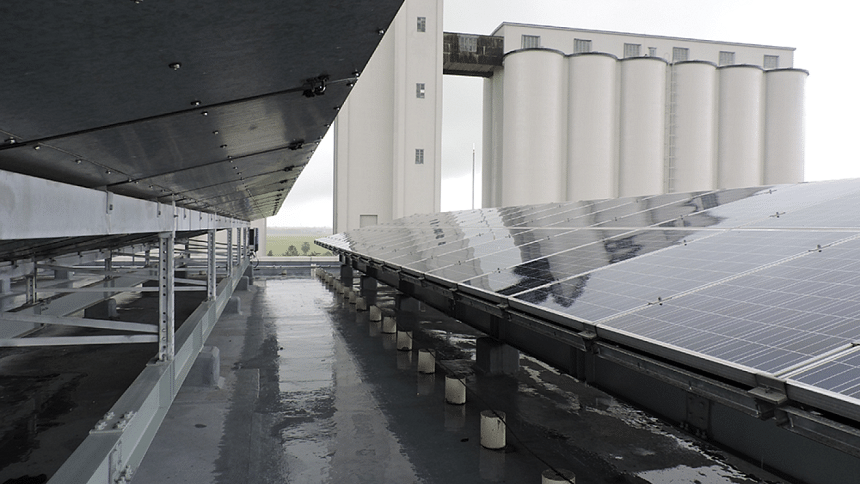Transforming electricity consumers into producers

Bangladesh enjoys a sizeable amount of sunshine. Here, the average solar radiation varies between 4 and 6.5 kilowatt-hour (kWh) per square metre per day. Tapping solar energy, Bangladesh has been able to provide access to electricity to over 12 percent of her population outside the grid network through the installation of more than 4.5 million solar home systems. Despite its huge potential, however, consumers of grid-connected electricity are yet to exploit the power of the sun to their advantage. The fact is, every on-grid household and commercial establishment can utilise solar energy to generate electricity by installing solar photovoltaic (PV) panels on their rooftops and become electricity producers, meeting their electricity demand partly or fully by themselves, and even selling excess electricity to the distribution utilities through net metering.
Net metering allows the customers of distribution utilities, who generate their own electricity from solar power or any other renewable sources, to feed electricity they do not use back into the grid. Net metering typically uses a bidirectional metre that can measure and record electricity flow in two directions—from utility to the customer (import) and from customer to the utility (export). The customer is billed on the basis of net meter reading; that is, imported unit minus exported unit. A net balance in favour of the customer is carried forward to the next month, while a balance in favour of the utility is settled at the end of the month as usual.
Then, at the end of the year, annual energy balance is calculated, and if there is any net exported unit, it can be sold to the utility at a tariff agreed to by the utility and the consumer. To operationalise net metering, an agreement needs to be signed between the utility and the consumer. One can check out samples of typical net metering architecture online to know how it works when a solar PV system is set up on a rooftop.
As a policy mechanism to incentivise renewable energy, net metering is not a new concept. The US state of Massachusetts introduced net-metered connection for the first time in the world in 1979. Afterwards, developed countries like Australia, Canada, Italy, Spain, and Denmark adopted net metering considering its manifold benefits. Net metering, for example, reduces the electricity bill of customers by lowering the use of electricity from the grid. Secondly, the customers may receive compensation for excess electricity fed into the grid. Thirdly, transmission and distribution losses can be avoided as electricity is consumed at the point of generation (distributed generation).
Finally, net metering contributes to the reduction of greenhouse gas emission through generation of electricity from renewables while decreasing a country's dependence on costly imported fossil fuels. Several South Asian countries such as India, Pakistan and Sri Lanka have also adopted the system realising its benefits.
In Bangladesh, the Directorate General of Food installed a Grid Tied Solar PV System with the capacity of 360 kWp on the rooftop of its multi-storied warehouse at Santahar (Bogra) Grain Silo with net-metered connection, which is the first of its kind in the country. Upon signing an agreement with the Bangladesh Power Development Board (BPDB), the Directorate General of Food's Santahar Grain Silo can now export electricity to the grid after meeting its own demand and is billed only for their net energy use. Since it came into operation in February 2017, the facility's Grid Tied Solar PV System has been able to generate more than 150,000 kWh of electrical energy, saving electricity bill to the tune of more than Tk 10 lakh.
In Bangladesh, where securing land for ground-mounted, large-scale solar power generation poses a huge challenge, net metering can be a good choice to incentivise solar power generation on rooftops. The example set by the Directorate General of Food by setting up Grid Tied Solar PV System on Grain Silo's rooftop is expected to be followed by other departments. Meanwhile, the owners of grid-connected private households and commercial establishments can also derive benefit from net metering by setting up similar systems on their rooftops. Thus, the transformation of electricity consumers into producers will result in significant renewable electricity generation, reducing government investment in the sector, and help attain energy security for the country.
Mohammad Alauddin is Joint Secretary, Power Division, Ministry of Power, Energy & Mineral Resources, Bangladesh.
Email: [email protected]





Comments